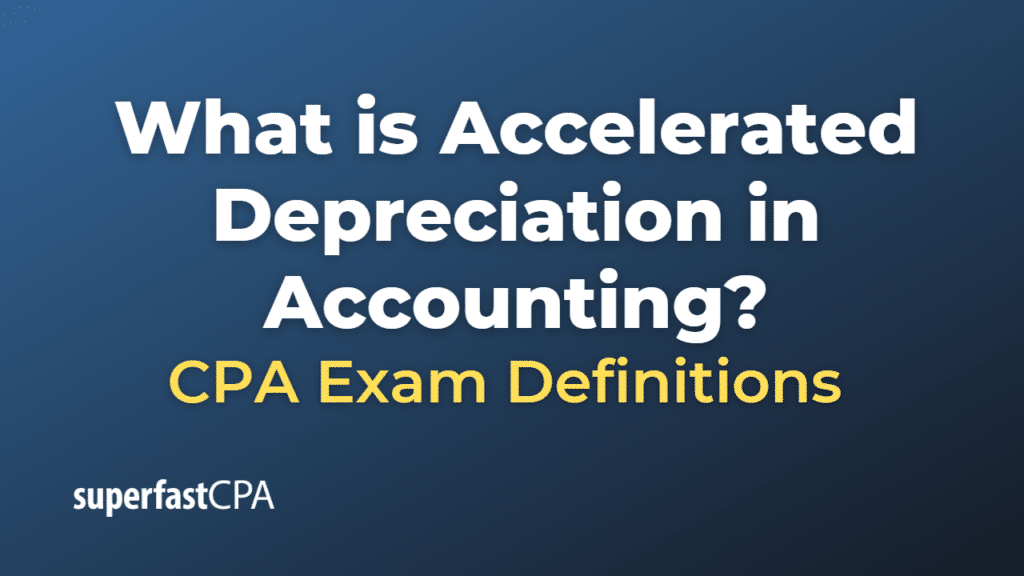Accelerated Depreciation in Accounting
Accelerated depreciation is an accounting method that allows for a higher depreciation expense in the earlier years of an asset’s useful life compared to its later years. This method results in a faster write-off of the asset’s cost and reduces taxable income more quickly in the initial years. Accelerated depreciation methods are commonly used for tax purposes, as they provide businesses with greater tax deductions in the early years of an asset’s life, thus deferring tax payments.
There are several accelerated depreciation methods, but the most common ones are:
- Double Declining Balance (DDB): This method applies a constant rate (usually double the straight-line rate) to the declining book value of the asset each year. As the book value decreases, so does the depreciation expense, resulting in a faster depreciation in the early years and a slower depreciation in the later years.
- Sum-of-the-Years’ Digits (SYD): This method calculates depreciation by multiplying the asset’s cost by a fraction representing the remaining useful life of the asset divided by the sum of the years’ digits. The fraction decreases each year, leading to higher depreciation in the early years and lower depreciation in the later years.
It is important to note that accelerated depreciation methods affect the timing of depreciation expenses and tax deductions, but they do not change the total amount of depreciation over the asset’s useful life. The total depreciation will be the same regardless of the method used; however, the timing of the depreciation will differ.
Example of Accelerated Depreciation
Let’s assume that a company purchases a machine for $10,000 with an estimated useful life of 5 years and a residual value of $1,000. The company wants to use an accelerated depreciation method, so it chooses the Double Declining Balance (DDB) method. Here’s how the depreciation schedule would look:
- Calculate the straight-line depreciation rate: (1 / 5 years) = 20%
- Double the straight-line rate to get the DDB rate: 20% x 2 = 40%
Year 1:
- Book value at the beginning of the year: $10,000
- Depreciation expense: $10,000 x 40% = $4,000
- Book value at the end of the year: $10,000 – $4,000 = $6,000
Year 2:
- Book value at the beginning of the year: $6,000
- Depreciation expense: $6,000 x 40% = $2,400
- Book value at the end of the year: $6,000 – $2,400 = $3,600
Year 3:
- Book value at the beginning of the year: $3,600
- Depreciation expense: $3,600 x 40% = $1,440
- Book value at the end of the year: $3,600 – $1,440 = $2,160
Year 4:
- Book value at the beginning of the year: $2,160
- Depreciation expense: $2,160 x 40% = $864
- Book value at the end of the year: $2,160 – $864 = $1,296
Year 5:
- In the final year, the depreciation expense is adjusted so that the book value equals the residual value.
- Depreciation expense: $1,296 – $1,000 (residual value) = $296
- Book value at the end of the year: $1,000 (residual value)
Using the Double Declining Balance method, the depreciation expense is higher in the early years and decreases over time. This results in faster cost recovery and tax deductions for the company during the initial years of the machine’s useful life.













